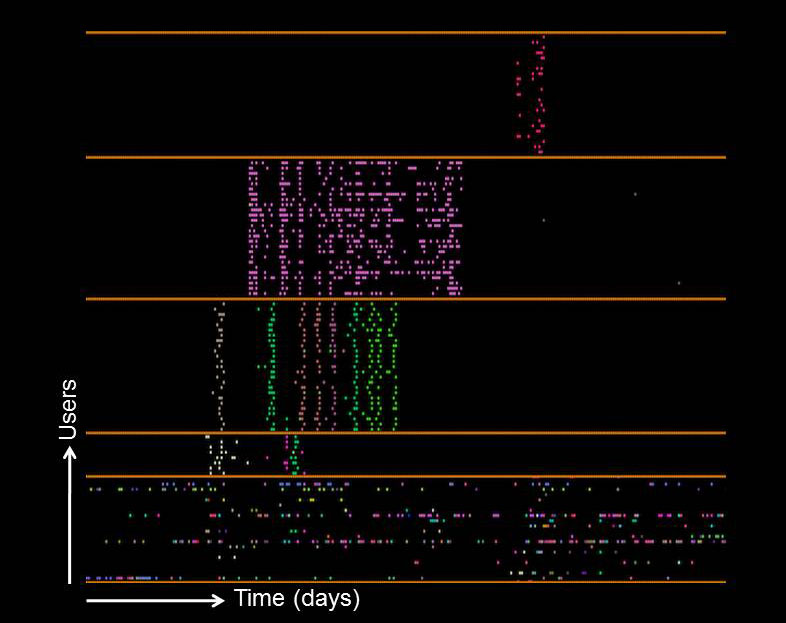Instrumentation shows systemic use of nanoHUB in classrooms

User behavior analysis: Individual users (rows) run tools (distinguished by color) for classes (top four sets of dots) and self-study (bottom set). The top set illustrates brief usage with one tool; second set, usage of one tool sustained for a longer period; third set, usage of a variety of tools; fourth set, a smaller class size; bottom set, a variety of tools used asynchronously. Step-like patterns are evident in the behavior of users identified as coordinated classroom users, reasonably corresponding to typical activity through a semester or term. A dissimilar behavior is seen in users identified as individual researchers or self-study users, who generally show a slow decay in activity over time. The figure shows usage by five groups between July 1, 2009, and June 30, 2010.
Using the automatic instrumentation available in nanoHUB.org tools and advanced web analytics, the Network for Computational Nanotechnology (NCN) has identified systemic classroom use of current research tools in over 760 formal classes at 185 institutions.
From fall 2000 through spring 2011, 14,500 classroom users performed 65,700 simulations. Usage patterns indicate a range of user behavior with nanoHUB tools, from the use of a single tool for an in-class activity or homework during a short period of time to the use of multiple tools at intervals across several weeks.
NCN provides tool-powered curricula—a one-stop shop for courses. NCN has deployed five integrated single tools hosting multiple individual tools in a single environment on nanoHUB. ABACUS, focused on the teaching and learning of semiconductor device fundamentals, serves such a user community. Homework and project assignments are available in an associated, living document wiki page that undergoes continuous improvement. The tool-powered curricula have been used by over 3,394 users since their publication in January 2008.
nanoHUB allows users to run simulations without any software installation in a completely transparent service cloud and makes accessible over 260 continuously evolving modeling and simulation tools with strong versioning capabilities.
Last updated 30 September 2012